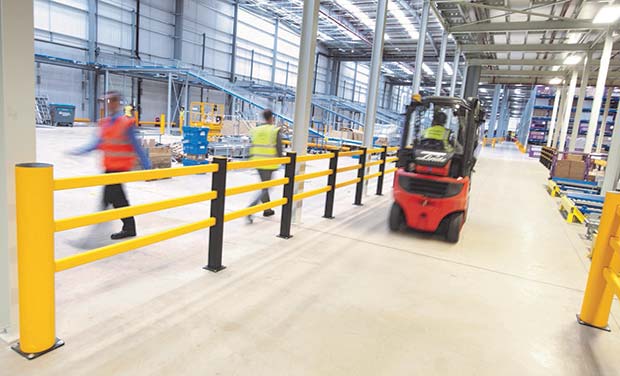Warehouse managers, facility advisors, factory administrators; they’re so sophisticated these days. Armed to the teeth with the latest efficiency gadget, clued-up on everything Health & Safety, connected and charged and plugged-in to anything that makes the levels of logistics more logical.

But oh, how times have changed.
Back in the ice age of facilities management – some time before the late-nineties, shall we say -your average warehouseman (and yes, let’s single out the male of the breed) took more of a caveman approach to procurement and layout. It was a bish-bosh strategy, not helped by other cavemen in the industry swinging similar clubs, which saw a lot of work-caves over-stacked, under-performing and in dire need of a healthy dose of care and attention.
And there was one particular target that these primitive beings liked to aim especially hefty blows towards – Health & Safety. They didn’t like this young upstart coming in, telling them how to save lives, save money, protect the important things in a company. Didn’t they realise there was a business to run?
And what were some of the most brainless objects in this nineties work-cave? The barriers. The items that go right to the very heart of Health & Safety best practice. Yes, the products that should have been streamlining and protecting and organising a facility were, in fact, the dumbest things in there.
In the caveman’s mind the barrier might seem like a fully functioning piece of strategic safety planning – but it’s nothing more than an accident waiting to happen.
Sadly, it’s unlikely that the caveman’s barrier will be up to the job. Steel barriers are rigid, which means when they are impacted by forklifts the majority of force (90%) is transferred to the fixtures. Almost inevitably this will rip up the barrier from the floor, leaving a costly repair bill and a back-to-square-one need for a replacement barrier. Problem solved? Hardly.
Today, thankfully, barriers possess a lot more brainpower. UK company A-SAFE are the global leaders, having invented the world’s first fixed polymer safety barrier in 2002. Robust, inherently strong yet flexible, the impact forces are absorbed through the polymer-based material, allowing barriers and floor fixings to stay intact after impacts.
The company’s scientific approach to safety puts segregation of vehicles and pedestrians first and will examine the whole layout of a facility and the potential forces of vehicles operating within it before fit-for-purpose barriers are strategically implemented to guide, organise and protect.
It’s a traffic management process, combined with smart, safe, innovative products that has been welcomed by sophisticated facility managers at Nestlé, Heathrow Airport, DHL, Unilever and BMW, who all use A-SAFE barriers today.
Evolution is a slow process, but thanks to modern Health & Safety best practice and the brilliance of barriers that flex, absorb and reform, the warehouse caveman -and his dumb, unfit barriers – are officially endangered species.
A-SAFE’s iFlex Range takes barrier protection to a new level – improved modularity, multi-directional functionality, hygiene sealed, maintenance free, extreme durability.
Tel: 01422 331133
Email: sales@asafe.com




Comments are closed.